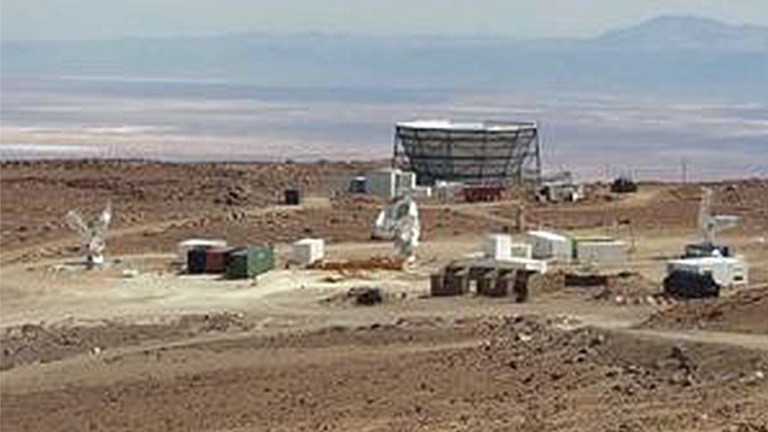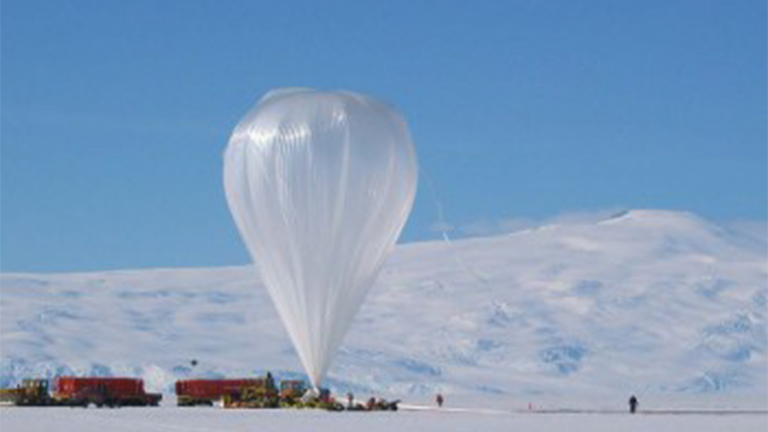The Simons Observatory will be located in the high Atacama Desert in Northern Chile inside the Chajnantor Science Reserve. At 5,200 meters (17,000 feet) above sea level, the site hosts some of the highest telescopes in the world. The Atacama Cosmology Telescope and the Simons Array are currently making observations of the cosmic microwave background (CMB). Our goals are to study how the universe began, what it is made of, and how it evolved to its current state. The Simons Observatory will add to these several new telescopes and new cameras with state-of-the-art detector arrays. The result will set the stage for the next generation of CMB experiments.
BLAST-TNG is a new telescope designed to observe the polarized thermal emission from interstellar dust. The data it collects will provide new insight into the properties of dust and the role of magnetic fields in the interstellar medium through a wide range of densities. BLAST-TNG will produce several-degree-scale polarimetric maps at sub-arcminute resolution, making simultaneous measurements in its three broad bands centered at 250 μm, 350 μm, and 500 μm. The new instrument will ride aboard a stratospheric balloon from Antarctica with a flight duration of 28 days. Of this time, 25 percent will be made available to the community for shared risk proposals.
EBEX is a balloon-borne polarimeter designed to measure the intensity and polarization of the CMB radiation. Measurements of the polarization of the CMB could probe an inflationary epoch that took place shortly after the big bang and significantly improve constraints on the values of several cosmological parameters. EBEX will also provide critical information about the level of polarized galactic dust which will be necessary for all future CMB polarization experiments.
The images obtained during the campaign will be used to analyze how waves generated at lower altitudes dissipate via instability and turbulence processes. These processes account for the deposition of significant energy and momentum transported by the waves from lower altitudes. They also play key roles in weather and climate throughout the atmosphere, but are poorly understood at present. Imaging of noctilucent clouds provides a unique window on these processes that is not available at any other altitude. Thus, this largely inaccessible region has the potential to educate us about important processes occurring throughout the atmosphere.



